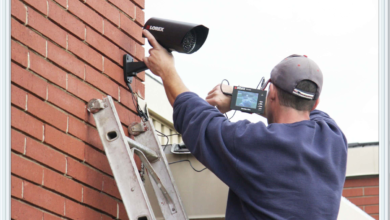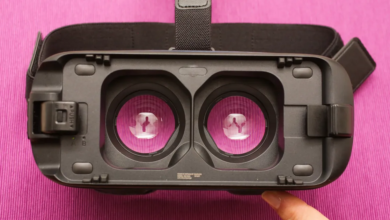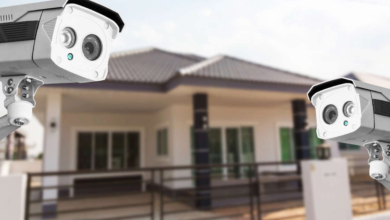Apple and Samsung Are Racing to Create the Ultimate Camera Phone

Commentary: Apple and Samsung’s efforts to win over professional photographers and videographers are reinforced with the Galaxy S23 Ultra and iPhone 14 Pro.
When sharing family photos, uploading vacation videos to TikTok, or joining a Zoom meeting, a phone’s camera connects our offline selves to our online selves. The iPhone 14 Pro and the upcoming Galaxy S23 Ultra, which will be available starting on February 17, are examples of how well Apple and Samsung comprehend this. Samsung and Apple are making a loud statement with both of their products: A new phone’s camera should be its top priority. It is by far the most important aspect separating expensive handsets from the greatest phone money can buy.
The Galaxy S23 Ultra and iPhone 14 Pro are the latest iterations of their respective companies’ multiyear marketing campaigns to woo photographers and videographers, improving what can be done on your phone’s very small screen in the process. They represent the conclusion of Apple and Samsung’s most recent efforts to outperform one another in an arms race that has been ongoing for more than ten years. The camera is a priority for Google and OnePlus as well, in addition to Apple and Samsung. But Apple and Samsung, the two leading phone manufacturers in the world by market share, have a significant impact on the gadgets we keep in our pockets.
Annual updates to smartphones feel incremental, making it more difficult for users to defend yearly purchases, especially while the price of basic products and services continues to be expensive. The most recent premium smartphones from Apple and Samsung are proof positive that consumers are prepared to spend more for the finest. Being the “best” frequently entails having the best camera for both businesses.
Samsung and Apple bet people will spend more on better devices
Not everyone wants a camera with a 100x digital zoom and a screen that is almost the size of a tablet, especially given the hefty cost of such a camera. Customers are waiting longer before making an update as generational upgrades grow less showy. However, there is research that suggests luxury phones continue to appeal to consumers despite inflation, suggesting that Apple and Samsung’s camera-first strategy may be successful.
The average selling price of the iPhone grew 7% year over year in the third quarter of 2022, according to Counterpoint Research, suggesting that Apple’s more expensive phones may be its most well-liked. (However, that could also be because the beginning price of the Pro has generally remained constant while the cost of Apple’s normal iPhones has climbed over time.)
In an interview with CNET earlier this year, TM Rohm, head of Samsung’s mobile experience business, claimed that the Galaxy S22 lineup had double-digit sales growth in comparison to the Galaxy S21 series. That suggests the more expensive Samsung phones are actually the best-selling models.
Rohm and Apple CEO Tim Cook have both stated that people are just prepared to pay more for excellent technology.
Rohm also told CNET that when things are tough, individuals become more careful in their decisions. In other words, they would be seeking out opportunities to generate more value.
Rohm also told CNET that when things are tough, individuals become more careful in their decisions. In other words, they would be seeking out opportunities to generate more value.
Since both businesses are anticipated to focus more on high-end devices, the present premium phones from Samsung and Apple may also have an impact on the products we see in the future. According to Bloomberg, Apple is considering producing an iPhone Ultra that would be an improvement above the $1,099 iPhone 14 Pro Max and perhaps add new capabilities. According to the report, it may also include more capabilities in the iPhone Pro for the following year to further set it apart from the standard iPhone. According to Bloomberg, one of those innovations might be a periscope lens for the Pro Max’s superior optical zoom, further emphasizing the prominence of the camera.
Samsung, on the other hand, built the foundation for its current Galaxy Ultra devices using the Galaxy Note, its prior high-end smartphone line. As the branding has been carried over to Samsung’s new high-end laptop, the Galaxy Book 3 Ultra, we can already see the Ultra line influencing other high-end items.
What makes an “ultra” or “pro” phone? Mostly the camera
Without a doubt, the camera is the most significant smartphone update that consumers are prepared to spend money on, according to both Apple and Samsung. At its Unpacked event on February 1, where it attempted to court filmmakers with endorsements from renowned directors Ridley Scott (Gladiator, Blade Runner), and Na Hong-jinn, Samsung made it apparent (The Chaser, The Wailing).
The Galaxy S23 Ultra’s main feature and the main method that Samsung sets the “ultra” model apart from its regular flagships is its camera system. The company spent a significant amount of its Unpacked presentation outlining the various new camera advancements, including a higher-resolution 200-megapixel sensor, wider dynamic range, steadier optical image stabilization for video, faster autofocus, and clearer low-light shots, among other improvements. The ordinary Galaxy S23 and S23 Plus are getting better at processing photographs, but they don’t have the Ultra’s new 200-megapixel camera or its high 100x zoom magnification.
Samsung makes it simpler to access settings for taking raw files by integrating those options straight into the native camera app, in case you needed more evidence that the firm is trying to attract photography enthusiasts. Uncompressed image data directly from the camera sensor is contained in a raw file, giving you more editing freedom. An expert raw file delivers even greater clarity and a larger dynamic range since it combines the data from multiple photographs that have been processed. The customized raw files produced by Google and Apple bridge the gap between a conventional raw file and developments in computational photography.
See the Galaxy S23 Ultra’s Camera in Action
The S23 Ultra’s base storage has increased from the S22 Ultra’s 128GB to 256GB to enable you fit all of those large files on your phone. Given that 8K films, raw data, and high-resolution images take up a lot of space, the decision to provide additional capacity in the entry-level device could potentially be regarded as an attempt to draw in photographers and videographers. Although Samsung doesn’t provide a 1TB storage option for the S23 Plus like it does for the S23 Ultra, the S23 Plus also starts at 256GB. It demonstrates how far Samsung has come since releasing its first Ultra phone, the Galaxy S20 Ultra, which started at 128GB and had a 512GB maximum storage capacity.
You could even claim that Apple’s fondness of showcasing the iPhone’s photography skills had an influence on some of Samsung’s decisions. When Apple announced the iPhone 14 Pro in September, which features improved optical picture stabilization and low-light capabilities, that strategy was clearly on display. Apple, like Samsung, increased the resolution of the iPhone 14 Pro’s camera from 12 to 48 megapixels, but the larger main sensor of the smartphone has actually had a significant impact on the camera’s low-light performance. Apple’s Prowar function, which allows users to take raw images while retaining some of the company’s image-processing algorithms, can now shoot at a resolution of 48 megapixels.
Similar to Samsung, the camera plays a significant role in distinguishing the more expensive iPhone 14 Pro and larger Pro Max from the more affordable iPhone 14 and iPhone 14 Plus. Comparatively speaking, those phones lack the telephoto lens found in the iPhone 14 Pro and have a 12-megapixel main camera sensor. In contrast to the iPhone 14 Pro and Pro Max, Apple’s less expensive iPhone 14 models do not offer 1TB of storage.
iPhone 14 Pro, camera is the star, but there’s more to it
There are other similarities between Apple’s Pro line and Samsung’s Ultra series of smartphones besides the camera, which may be their most distinctive feature. Compared to the less expensive models in their respective ranges, both phones have more features that are geared towards productivity. In contrast to the Galaxy S23 and S23 Plus, the S23 Ultra has a stylus that you can place in the phone’s bottom. With Dynamic Island, a unique software interface designed around the selfie camera on the iPhone 14 Pro, you can view system warnings and manage background tasks without leaving the current app. The iPhone 14 and iPhone 14 Plus don’t have the feature.
Additionally, both phones provide more in terms of the screen. The Galaxy S23 Ultra’s 6.8-inch screen is physically larger than the displays on the Galaxy S23 (6.1 inches) and the S23 Plus, which is rather literal for Samsung (6.6 inches). Apple offers the same two display sizes (6.1 inches or 6.7 inches) across the whole iPhone 14 family, but has found additional methods to distinguish the panels on its Pro iPhones. The Dynamic Island, an always-on display, and an adjustable refresh rate for smoother scrolling and visuals are only available in Pro models.
Despite these parallels, Apple and Samsung’s strategies nevertheless diverge significantly, most notably in terms of the technologies that both businesses incorporate into less expensive smartphones. The Snapdragon 8 Gen 2 chip from Qualcomm, a new customized version, powers every Galaxy S23 handset made by Samsung. The standard iPhone 14 models, on the other hand, still use the outdated A15 Bionic chip from Apple, making the iPhone 14 Pro and Pro Max the only models to use the new A16 Bionic chip. This is the first time Apple has done so with a new flagship phone. Additionally, Apple includes a lidar scanner for depth detection in its Pro iPhones, which enhances AR applications, some photographic skills like autofocus, and enables accessibility features like door and person detection.
It’s not just about increasing sales for Apple and Samsung when they provide their premium phones more sophisticated camera and display functions. Both businesses are under pressure to maintain their reputations as trailblazers while demonstrating that there are still many good reasons to be optimistic about the future of smartphones.
Many of those factors currently revolve around the camera, which we use for anything from video chatting to recording holidays to, possibly, powering augmented reality apps in the future. In the upcoming years, it will be interesting to see how Apple, Samsung, and other companies try to enhance and reinvent that experience.












One Comment